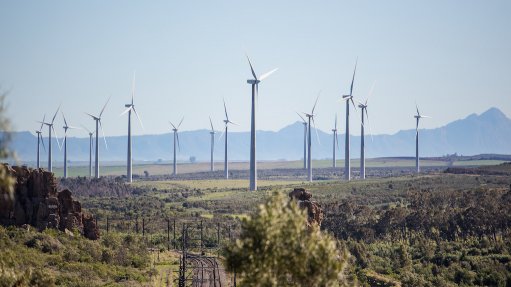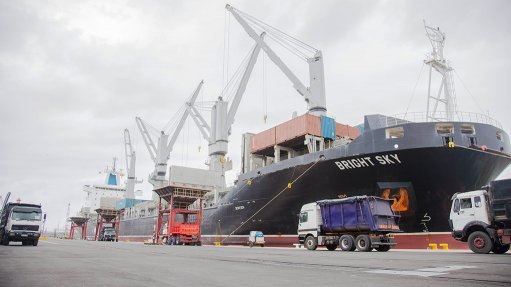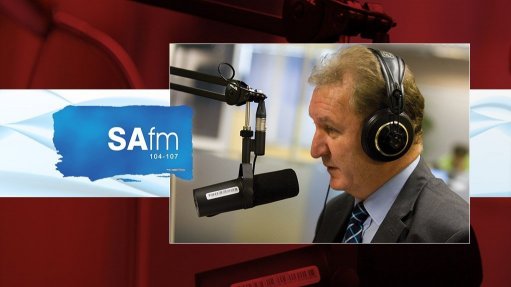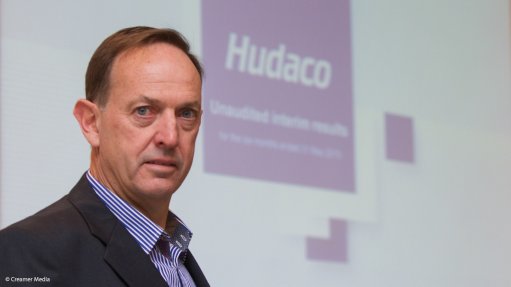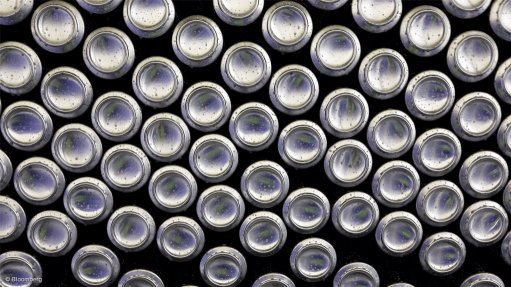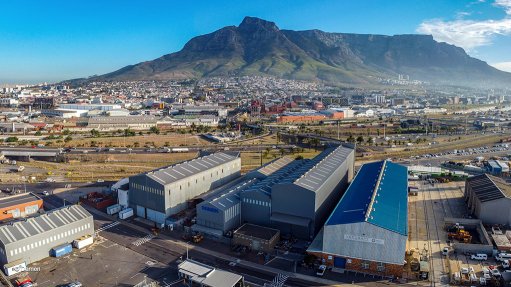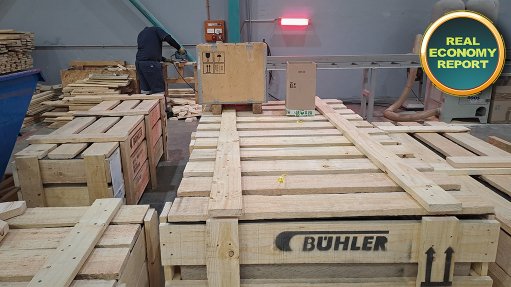First-quarter contraction demonstrates GDP growth volatility – TIPS
GDP contracted by 0.1% in the first quarter of this year, underscoring the increased volatility of GDP growth since the Covid-19 pandemic started in 2020, said nonprofit economic research institution Trade and Industrial Policy Strategies (TIPS).
The GDP declined in five quarters over the past three years, compared with nine from 1994 to 2018. The volatility resulted, in part, from extraordinary fluctuations in global mining prices, as well as shortfalls in infrastructure.
The inability of State-owned enterprises Transnet and Eskom to meet post-pandemic demand has vastly accelerated growth in private-sector alternatives, mitigating the impacts on growth, TIPS adds in its Real Economy Bulletin for the first quarter of 2024.
"The overall recovery from the pandemic hides vast disparities between economic sectors, with goods production in a particularly precarious state. Only the private services, which contributed some 40% of the GDP in the first quarter, and agriculture, public services and logistics now produce more than before the pandemic.
"The rest of the economy remains under water," it noted.
Further, the GDP data on mining reflect the modest but persistent decline in output in volume terms over the past 20 years, driven mostly by a continual fall in gold output as deposits run out, TIPS points out.
"Volumes alone, however, underplay the impact of extraordinary fluctuations in world prices, and consequently rents to local producers, owing to the pandemic and the Russian invasion of Ukraine."
Meanwhile, electricity, rail and port services saw demand plummet during the Covid-19 lockdown and found it hard to keep up with the swift upswing in demand that followed. In part, their struggles reflected the decline in Eskom and Transnet capacity over the previous decade.
The rapid expansion in private alternatives in response had initiated a transformation in ownership and control in network infrastructure, the report adds.
Rooftop solar and solar plants set up by mines, refineries and other major users now exceed five gigawatts, or about 10% of Eskom’s nominal capacity. It has climbed from well under 5% five years ago.
"The growth in capacity outside of Eskom has clearly been crucial in securing even slow growth from mid-2022 to the end of 2023, when loadshedding hit new heights," TIPS said.
A similar pattern emerged for freight transport. The volume carried by Transnet fell 20% from the first quarter of 2020 to the first quarter of 2022. Road transport took up the slack, climbing 20% from March 2020 to March this year.
As a result, the share of land freight carried by rail fell from 30% before the pandemic to below 20% in late 2023. Rail saw a particularly sharp drop at the end of 2022, when it plummeted to 14%, although it recovered some of the losses in 2023.
A sharp fall in manufacturing sales over the first quarter contributed to slow overall growth. Manufacturing sales shrank steadily by 4.5% from December 2023 to March 2024.
"Most manufacturing industries had falling sales over the year to March 31. The exceptions were petrochemicals, wood and paper, glass and clothing."
EMPLOYMENT
During the year to the first quarter 2024, although the GDP grew only 0.7%, employment reportedly expanded by more than half a million. The formal sector accounted for two-thirds of the new jobs.
Domestic work saw a sharp recovery but remained below pre-pandemic levels. Changes in employment within manufacturing did not align with industry sales figures, with an unusually sharp decline reported in the automotive sector and extraordinary growth in clothing and textiles.
In the year to the first quarter of 2024, the Quarterly Labour Force Survey found that total employment increased by 550 000 jobs, or 3.4%, to reach a total of 16.7-million.
The formal sector added 360 000 positions over the year to March 31, expanding by 3.2%. Domestic work reportedly gained 120 000 jobs, or over 10%, agriculture added 50 000 jobs for growth of 6.1%, while the informal sector was essentially unchanged.
Manufacturing lost 50 000 jobs and construction also shrank slightly during the first quarter of the year.
"Together, these sectors employed around half a million fewer people than in the mid-2010s, according to the survey, and 150 000 fewer than before the pandemic.
"In contrast, the rest of the economy, made up mostly of private and personal services, retail, logistics and social services, gained 550 000 jobs, or 4.6%, in the year to March 2024," the report highlighted.
INTERNATIONAL TRADE
Trade continued to normalise, as international commodity prices came off the speculative highs seen from 2020 to 2022, while imports gradually recovered until mid-2022.
"However, since then, imports have fallen, mostly owing to a combination of slowing growth and softer world oil prices. In manufacturing, foreign automotive sales remained strong, but coal and platinum exports suffered from a sharp fall in international prices," TIPS researchers say.
South Africa’s trade surplus shrank by half in the first quarter of 2024, or 75% lower than six months earlier. It dropped from R42-billion in the third quarter of 2023 to R22-billion in the fourth quarter, and down to R11-billion in the first quarter of 2024.
Imports climbed through 2022, although they had fallen since then, as overall economic growth slowed, and world oil prices dropped.
"Despite these trends, the trade balance remained positive from the second quarter of 2023 until the first quarter of 2024, reversing a R5-billion deficit in the first quarter of 2023. In the first quarter of 2024, the value of exports fell by R55-billion, or 11%, to R469-billion. Imports dropped by R44-billion, or 9%, to R458-billion.
Within the manufacturing sector, only food and transport equipment expanded exports in the year to March 2024. Transport equipment saw the largest absolute increase in constant rand terms, by about R7-billion or 15%. Food and beverages grew R1.2-billion, or 6%.
"These gains, however, were more than offset by declining sales of metals, chemicals, machinery and paper. All manufacturing industries saw falling imports, reflecting the overall economic slowdown. Imports of cars and capital equipment contracted particularly sharply," TIPS says.
INVESTMENT AND PROFITABILITY
Meanwhile, investment fell by 1.8% in the first quarter. It had dropped 6.6% from the second quarter of 2023 when, for the first time since the Covid-19 lockdown, it exceeded pre-pandemic levels.
The investment rate, or the share of investment in GDP, fell to 14.8%, down from 15.3% in the second quarter of 2023, 15.5% in 2019 and 18% in 2015.
The sharpest fall occurred in private investment, which dropped 3.3% in the first quarter. General government investment fell by 2.4% and State-owned companies' investment by 1.3%, the report says.
The investment rate in South Africa remained low by global standards, on par with Brazil, but lower than other African and Latin American countries, although investment in Asia was unusually high, especially in China.
"Most economists argue that investment of between 20% and 25% is necessary to sustain long-term growth. Higher rates are associated with significant inefficiency and falling returns, while lower rates are associated with inadequate maintenance and expansion of productive assets, as well as economic and social infrastructure."
Manufacturing saw a marked improvement in returns in the year to the quarter four of 2023, increasing from 8.2% to 12.4%. Construction also saw relatively high returns of around 15% for the second year in a row.
However, falling world prices brought a steep decline in mining profitability, which dropped to levels previously seen at the bottom of the commodity cycle in the 2010s.
FOREIGN DIRECT INVESTMENT PROJECTS
In the first quarter, 20 projects were added to TIPS' foreign direct investment tracker.
"Investment was recorded in four industries, including notably energy-related activity. The highest-value projects were in mining, including the proposed Sylvania Metals R2.5-billion platinum-group metals mine, and its two far northern limb platinum group metal projects, which are under exploration."
Further, the investment value in electricity was R210-million during the first quarter of the year and the investment value in services was R1.04-billion. Services recorded the greatest number of projects with eight announcements.
"Greenfield projects make up the majority by both value and number. Most projects are still at the announced stage," TIPS says.
Comments
Press Office
Announcements
What's On
Subscribe to improve your user experience...
Option 1 (equivalent of R125 a month):
Receive a weekly copy of Creamer Media's Engineering News & Mining Weekly magazine
(print copy for those in South Africa and e-magazine for those outside of South Africa)
Receive daily email newsletters
Access to full search results
Access archive of magazine back copies
Access to Projects in Progress
Access to ONE Research Report of your choice in PDF format
Option 2 (equivalent of R375 a month):
All benefits from Option 1
PLUS
Access to Creamer Media's Research Channel Africa for ALL Research Reports, in PDF format, on various industrial and mining sectors
including Electricity; Water; Energy Transition; Hydrogen; Roads, Rail and Ports; Coal; Gold; Platinum; Battery Metals; etc.
Already a subscriber?
Forgotten your password?
Receive weekly copy of Creamer Media's Engineering News & Mining Weekly magazine (print copy for those in South Africa and e-magazine for those outside of South Africa)
➕
Recieve daily email newsletters
➕
Access to full search results
➕
Access archive of magazine back copies
➕
Access to Projects in Progress
➕
Access to ONE Research Report of your choice in PDF format
RESEARCH CHANNEL AFRICA
R4500 (equivalent of R375 a month)
SUBSCRIBEAll benefits from Option 1
➕
Access to Creamer Media's Research Channel Africa for ALL Research Reports on various industrial and mining sectors, in PDF format, including on:
Electricity
➕
Water
➕
Energy Transition
➕
Hydrogen
➕
Roads, Rail and Ports
➕
Coal
➕
Gold
➕
Platinum
➕
Battery Metals
➕
etc.
Receive all benefits from Option 1 or Option 2 delivered to numerous people at your company
➕
Multiple User names and Passwords for simultaneous log-ins
➕
Intranet integration access to all in your organisation






